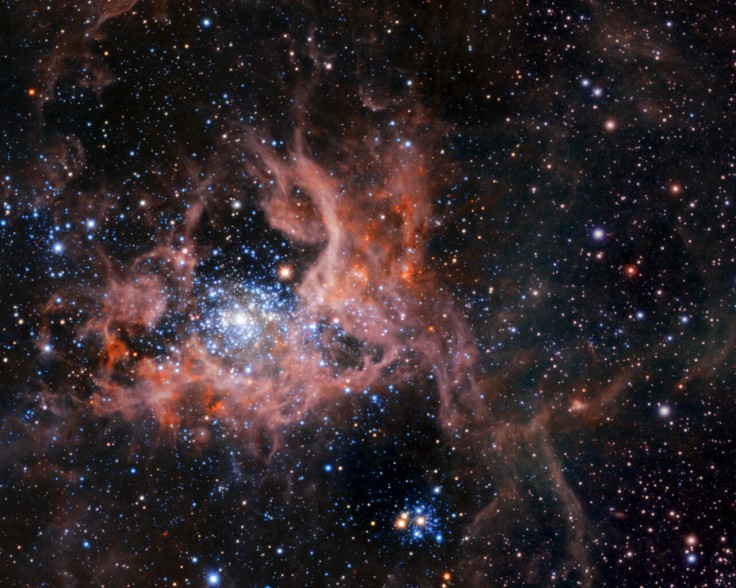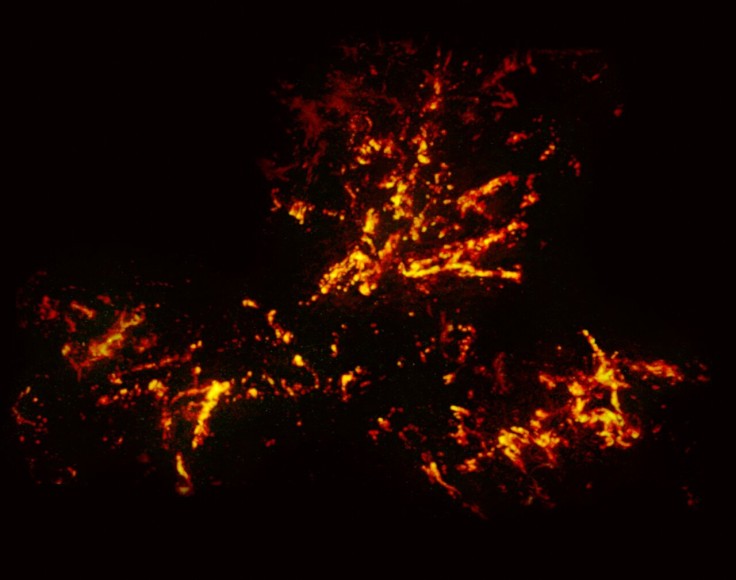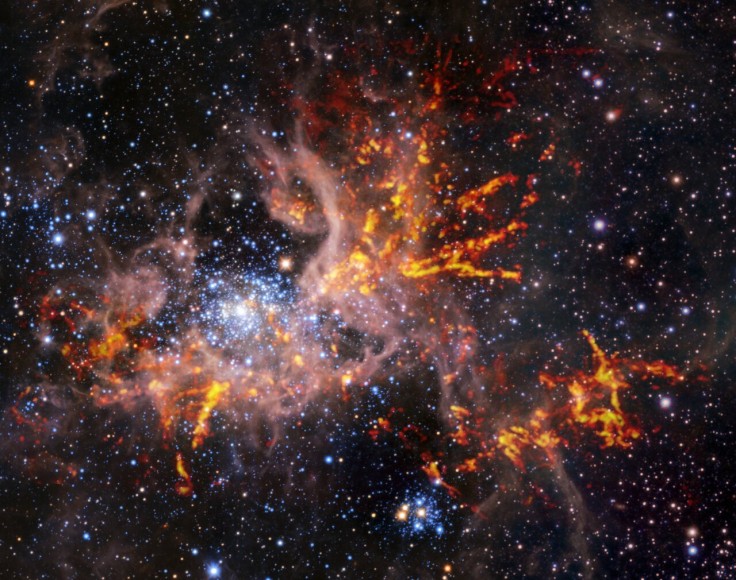The Tarantula Nebula is a web of stars, gas, and dust with a diameter of 600 light-years that is found in the Large Magellanic Cloud, a satellite galaxy of the Milky Way. The official name of this nebula is 30 Doradus, which refers to a catalog number for objects in the constellation Dorado, as per Reuters.

Tarantula Nebula
The nebula gets its name from the fact that some of its architecture resembles spider legs, with blazing filaments of gas, dust, and stars. The gas composition of the nebula is comparable to that of the universe earlier in its existence, consisting primarily of hydrogen and helium.
"What makes 30 Doradus unique is that it is close enough for us to study in detail how stars are forming, and yet its properties are similar to those found in very distant galaxies, when the Universe was young," said Guido De Marchi, a scientist at the European Space Agency (ESA) and a co-author of the paper presenting the new research.
The said nebula is around 170,000 light years away from Earth.
"Thanks to 30 Doradus, we can study how stars used to form 10 billion years ago when most stars were born," Guido added.
According to Forbes, the Tarantula Nebula is an extragalactic object located within the Large Magellanic Cloud (LMC), an irregular dwarf galaxy orbiting our Milky Way galaxy that will be engulfed by it in 2.4 billion years. There are around 30 billion stars in the LMC.
A New Image of 30 Doradus
The European Southern Observatory (ESO) has released a new image of the Tarantula Nebula, as per Forbes.

Astronomers were able to reveal detailed architecture of the Tarantula Nebula's wispy gas clouds using new observations from Chile's Atacama Large Millimeter/submillimeter Array (ALMA) radio telescopes, which provide insight into how big stars form in this region.
Because the Tarantula Nebula's center is forming massive stars, astronomers used ALMA to investigate a larger section of the nebula, showing enormous, wispy, and frigid gas clouds that collapse to give birth to new stars.
What Method Was Used To Produce the Image?

Carbon monoxide gas content in the area, where scientists believe it is located, can be used to trace the structure of this nebula. CNET reported that these carbon monoxide residues are of interest to scientists because they indicate the location of cold clouds that are known to collapse and generate newborn stars. And stellar nurseries like 30 Doradus produce baby stars.
It should be noted that scientists can obtain a pretty good idea of what the outline of 30 Doradus looks like if they can figure out where those gas clouds are.
The rest of the scene was produced by overlaying the gas cloud outline with a prior infrared image of the same area, which displays hot cosmic gas, denoted by pinkish puffs, and dazzling speckles of stars gracing an indigo background of space.
When put all together, we get this fantastic composite image, which you can see above.
What Did ALMA Observation Show the Scientists?
Tony Wong, a professor at the University of Illinois at Urbana-Champaign and lead author of the research said: "These observations confirmed that even in a region with extremely active feedback, gravity's presence is still strongly felt and star formation is likely to continue."
In other words, young stars that expel energy do not appear to disrupt the stellar nursery's gravity or hinder star formation.
Related Article: NASA Shares Perseverance Rover Photo of the Martian Landscape









